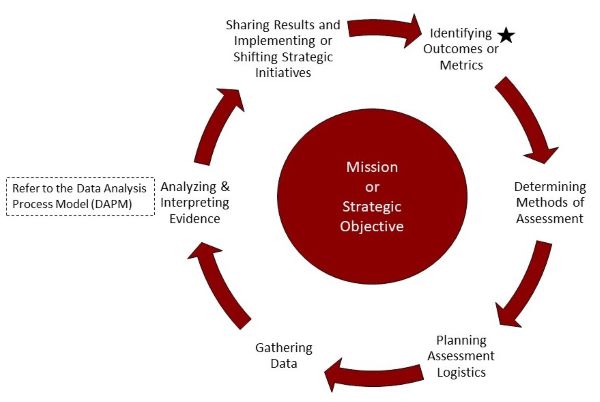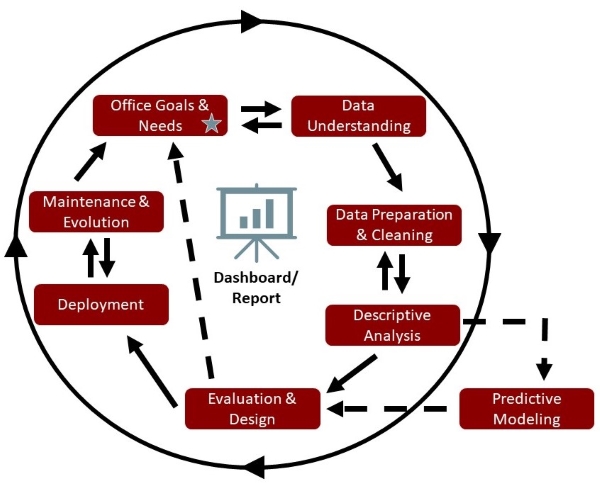Guiding Models & Frameworks
We have defined these models in our office
General Assessment Process Model (GAPM)
General Assessment Process that Departments should follow from start to finish.
|
This model is adapted from the Yousey-Elsener (2013) assessment cycle, which highlights the following characteristics: |
|||||
 |
Mission or strategic objective serves as the foundation for all assessment-related activities; The cycle starts with identifying outcomes, which should be derived from mission or strategic objectives; The cycle includes all major steps to consider in an assessment process, including: (a) identifying outcomes, (b) determining methods, (c) planning assessment logistics, (d) implementing data gathering methods, (e) analyzing evidence, and (f) sharing and implementing results; The cycle is ongoing, meaning that data gathered, analyzed, and implemented will lead to new and advanced strategic decisions and assessment processes. The model being a cycle offers an advantage because significant changes can be implemented and improved continuously over time. |
||||
|
Reference: Yousey-Elsener, K. (2013). Assessment fundamentals: The ABC’s of assessment. In D. M. Timm, J. D. Barham, K. McKinney, & A. R. Knerr (Eds.), Assessment in practice: A companion guide to the ASK standards (pp. 9-18). ACPA. |
|||||
|
Utilizing the Assessment Logic Model offers liaisons and other staff in the Division of Student Affairs several advantages:
|
|||||
Data Analysis Process Model (DAPM)
Process to follow when collaborating with A&A to process and visualize data.
|
This model is adapted from the Cross Industry Standard Process for Data Mining (CRISP-DM) that was published in 1999 to illustrate a project management approach to data mining. Our model highlights the following phases A&A follows when collaborating with Student Affairs departments to analyze and visualize data into a dashboard or report: |
|
 |
Business Understanding: The first phase is for us to meet with stakeholders to develop a business understanding of office/department needs and identify what goals or objectives will be accomplished as well as the context surrounding the project. Data Understanding: The second phase involves us gathering, identifying, and interpreting any data related to the project. We will dig into the data to examine it for clarity, quality, and usefulness to the specified purpose of the project. If questions emerge, we will organize a meeting to review and re-establish a business understanding from stakeholders. Data Preparation & Cleaning: In the third phase, we will clean, prepare, and format the data for the software application and/or statistical technique we will use to evaluate and visualize the data. |
|
Descriptive Analysis: In the fourth phase, we will run basic descriptive statistics on the data to identify basic characteristics such as total, percent of total, average, and normality. These analyses will help us further clean and interpret the data and establish a foundation for more advanced analyses. Predictive Modeling: For projects that have appropriate data and objectives, we will conduct correlational, comparative, or predictive analyses using SPSS, R, and other statistical software packages. These analyses will correspond with some variation of a report or memo to explain the methodology and results of the chosen statistical analysis. |
|
